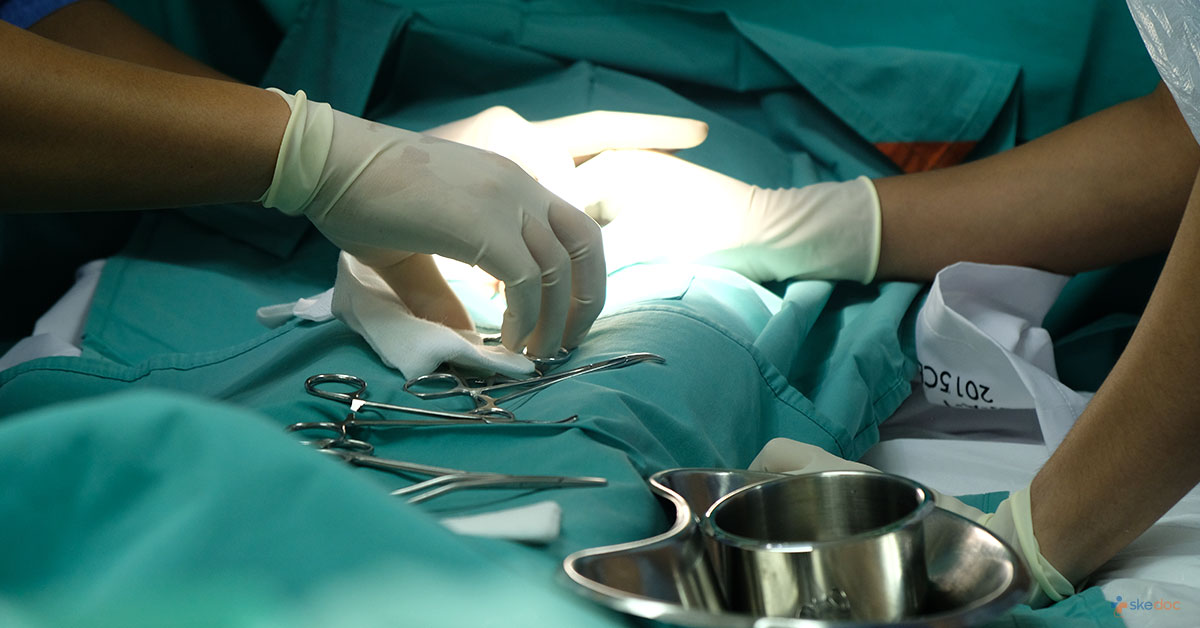Allergy
Blood Diseases
Bone & Joints
Brain
Cancer
Child Care
Cosmetic Surgery
Diabetes
Endocrinology
ENT
Eye
Gen Medicine
General Surgery
Heart
Kidney
Lifestyle
Liver & Digestive
Lung
Men’s Health
Mental health
Physiotherapy
Rheumatology
Skin and hair
Sleep Disorders
Spine
Transplant
Women Health
Thyroid
Vascular Surgery
Circumcision

What is Circumcision?
Circumcision is a surgical procedure performed to remove the skin that covers the tip of the penis. Circumcision does not affect fertility or sexual satisfaction.
Is the Circumcision procedure an elective or an emergency procedure?
Circumcision is an elective procedure.
Types
Circumcision is performed either in:
- A conventional method or
- A device-based method
In the conventional method, clamps such as Gomco clamp or Mogen clamp are attached to the penis and the excess foreskin is cut. In the device-based method, a plastic ring called a plastic bell device is placed on the penis to allow the foreskin to fall off naturally within 7 to 10 days.
Indications
In some areas of the world, Circumcision is performed as a religious ritual. It is also performed for the following medical reasons are:
- To reduce the risk of sexually transmitted diseases
- For hygiene
- To reduce urinary tract infections
- To reduce the risk of penile cancer
- To reduce the risk of HIV infection
- In the treatment of phimosis and balanoposthitis
- In the treatment of swelling of the foreskin
Contraindications and risk factors
Circumcision is not performed if the individual has:
- Blood clotting disorders
- Premature birth
- Genital structural abnormalities
- Presence of any penile warts on the foreskin
- Presence of any acute illness or infection
- Uncontrolled diabetes or hypertension
- Poor general health
Investigations before the procedure
Investigations that are done for newborns before Circumcision include coagulation tests to check bleeding time and clotting time. For adults, the following tests are considered:
- Detailed physical examination of the penis
- Coagulation tests
- Random blood sugar
- Urinalysis
- HIV test
Preoperative advice
Preoperatively before Circumcision, the risks and benefits of the procedure are discussed.
Intraoperative details
Anaesthesia: Circumcision is done under local anaesthesia. In older children and adults it is done under general anaesthesia.
Duration: The procedure takes 10 to 15 minutes.
Description of the procedure
The patient is positioned on his back on the operating room table. Penis and the surrounding area is cleaned with an antiseptic solution. Anaesthesia is injected at the base of the penis. Topical anaesthesia can also be applied. A special clamp is used to separate the foreskin from the head of the penis and a scalpel is used to remove the excess foreskin. In other methods, the foreskin is separated and a plastic ring is placed on the penis that allows the foreskin to fall off naturally after 7 to 10 days. This is mostly performed in newborns. Antibiotic cream or petroleum jelly is applied around the penis and it is packed with gauze.
Postoperative details
Postoperatively after the Circumcision:
- It takes 10 days for the penis to heal
- Avoid putting pressure on the penis
- Follow effective pain management measures
- Avoid wetting the penis until it heals
Specific instructions are to be followed in newborns after Circumcision are:
- The bandage should be changed with each diaper change
- Apply petroleum jelly to the tip of the penis so that it does not stick to the diaper
- Wrap the diaper loosely without putting much pressure on the penis
- Wash the penis gently after bowel movements
- Seek medical consultation if the plastic ring does not fall off within 2 weeks
- Observe for signs of infection including bleeding, discharge from the penis, or inability to urinate within 12 hours after the procedure
Role of diet/ Exercise/ Lifestyle changes
Specific diet and exercise restrictions after a Circumcision procedure in adults include the following:
- Avoid heavy lifting for a few weeks
- Avoid strenuous exercises and activities like jogging or cycling for a few weeks
- Perform gentle exercises and walking
- Avoid sexual intercourse for six weeks after the procedure
- Diet as directed by the physician
- Observe the site for any signs of infection such as increased pain, difficulty urinating, discharge from the penis, fever, swelling, or redness
Complications
Circumcision is done in infants with very minimal complications. Circumcision done in adults can rarely lead to complications. Some of the complications of Circumcision include:
- Bleeding
- Infection
- Removing too much or too little foreskin
- Improper healing of the foreskin after the surgery
- Injury to the penis
- Adverse reaction to anaesthesia
- Excessive swelling of penis or scrotum
- Problem during urination
- The remaining foreskin can reattach to the penis, requiring a correction surgery
Prognosis
The overall prognosis of Circumcision is excellent.
Indications for hospitalization if required
Circumcision is performed in a hospital setting and the duration of the stay depends upon the medical condition of the individual.
Suggested clinical specialist/ Departments to consult for the procedure
- General surgery
- Urology
Additional information
Circumcision is performed in children for religious or cultural reasons. It is most common in Muslims and jews. It is performed as a religious ceremony at home by a person who is surgically trained to do ritual Circumcision.
Was this article helpful?
YesNo




